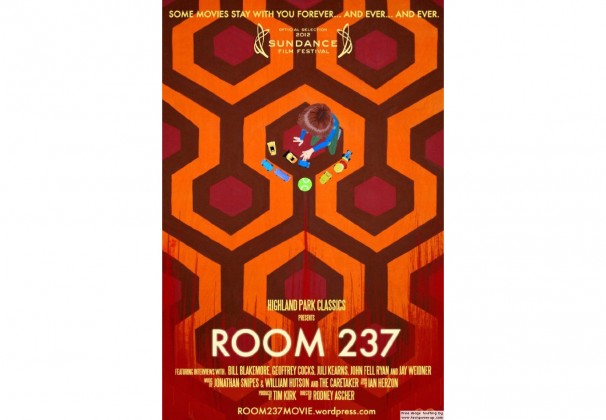
More often than not, conspiracy theories are disregarded as flights of fancy — things that either don’t make sense or are just unbelieveable. But in Rodney Ascher’s new documentary “Room 237,” conspiracy theorists have their moment in the spotlight. A surprise smash at both Cannes and Sundance film festivals, “Room 237” takes a look at one of modern cinema’s most well-known films — Stanley Kubrick’s classic “The Shining” — and breaks it down piece by piece until it is reorganized in ways that are vastly different from what viewers may have imagined it to be.
When Ascher saw “The Shining” for the first time, he knew it was a different kind of film. So he watched it over and over again. After repeated viewings he found there were certain aspects of the film that stuck out in oddly mysterious ways. To delve into the mystery further, Ascher sought out five experts whose subject areas range from conspiracies to the paranormal and nearly everything else in between to decode this puzzle. The five experts use their individual areas of expertise to decode Kubrick’s masterpiece shot by shot.
Ascher often slows down footage and pauses it while the experts explain their intricate theories, many of which are based on lore that claims the hotel was a Native American burial ground. Based on “Room 237,” it seems like every frame in Kubrick’s film can be interpreted in a new way. The most significant example of this is when a superimposition of the film is run forwards and backwards simultaneously. Several eerie images and symbols appear when this occurs, suggesting that there may be subliminal messages in “The Shining.”
At the beginning of the documentary, a disclaimer states that the opinions in the film are neither those of Kubrick’s estate, which is owned by his brother-in-law and the executive producer of nearly all of the late director’s films Jan Harlan, or those of his surviving relatives. The viewers should not interpret the conclusions of “Room 237” as absolute truths. Perhaps the disclaimer is the essence of the film itself. It’s a warning that we could be seeing something that’s mind-blowing and revelatory, but could also be a series of random facts.
In either case, “Room 237” plays out like a mystery. It draws you in and keeps you close, but it doesn’t give you the answers. In the most liberating way possible, the answers are yours to decide.
A version of this article was published in the Thursday, March 28 print edition. Charlie Spector is a contributing writer. Email him at [email protected].
























































































































































